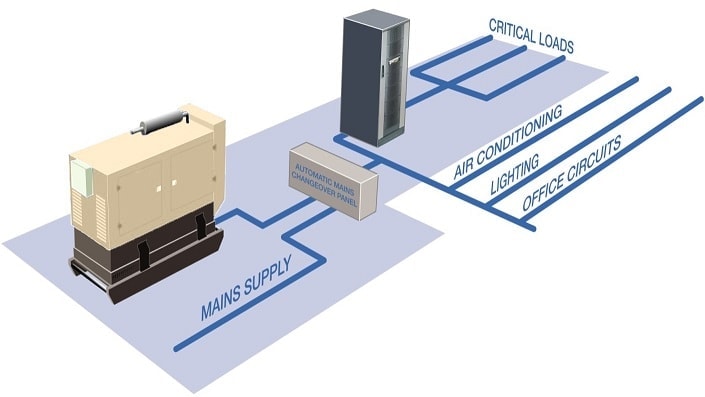[vc_row][vc_column width=”3/4″][vc_separator][vc_column_text]Data centres and other installations needing power protection have traditionally favoured lead-acid batteries for UPS backup power, and the technology remains dominant today. Yet lithium-ion batteries have been commercially available for many years, and offer a demonstrably attractive alternative.[/vc_column_text][vc_column_text]This raises two questions: Why hasn’t the industry adopted lithium-ion solutions with greater enthusiasm, and is this likely to change?[/vc_column_text][vc_column_text]We can answer these by looking at factors relating to both lead-acid and lithium-ion batteries. We will see that each type has both advantages and disadvantages, and a role to play in the industry – but the balance may be tipping towards greater lithium-ion use.[/vc_column_text][vc_column_text]
Lead-acid issues
[/vc_column_text][vc_column_text]Lead-acid batteries have long been the most widely accepted option, popular for their low cost and reliability. Their reputation was enhanced by the appearance of valve regulated lead-acid (VRLA) types. These sealed units are regarded as safer and more environmentally-friendly than the open, vented versions. However, these batteries are not ‘fit and forget’ devices; their voltage, internal resistance and operating temperature must be regularly monitored, to ensure they are correctly charged and in optimal condition. Several factors can reduce their working life or even induce failures. These include under or over-charging, incorrect ambient temperature, and battery conditions such as sulphation, corrosion or gassing.[/vc_column_text][vc_column_text]Lithium-ion advantages[/vc_column_text][vc_column_text]Lithium-ion batteries have a higher purchase price than VRLA products, costing up to 175 – 200% as much up front. However the total cost of ownership is less, especially as lithium-ion pricing has dropped significantly over the last two years. In any case, the purchase premium is offset because lithium-ion batteries last for 12 – 15 years compared with 7 – 8 years for VRLA. Further cost savings are possible, because they can operate at higher temperatures than VRLA products, and can be co-located in a room with UPSs and servers – saving on the expense of providing a separate battery room, and the cost of cooling it. As a related benefit, Lithium-ion batteries offer improved energy density, being up to 70% smaller and 60% lighter, significantly reducing storage space requirements.[/vc_column_text][vc_column_text]Lithium-ion batteries are not maintenance-free, but maintenance costs are less than those for VRLA. End of life disposal costs are lower as well. Depending on chemistry, technology, temperature and depth of discharge, they also support up to ten times more discharge cycles, with a self-discharge rate – slow discharge while the battery is not in use – of about four times less than VRLA. Charging rate becomes four times faster or more.[/vc_column_text][vc_column_text]When all the life time costs are factored in, lithium-ion’s initial price premium is eroded – and with prices continuing to drop, lithium-ion is starting to win the TCO race. And by reducing or even negating the price barrier, we’re left with a set of lithium-ion benefits as described above.[/vc_column_text][vc_column_text]
The data centre market view
[/vc_column_text][vc_column_text]Against this is the natural conservatism of those responsible for mission-critical data applications, which is to be expected when considering the possible consequences of a wrong decision. More specifically, there are fears that lithium-ion represents a fire hazard or worse. These have been strengthened by incidents such as the exploding Samsung Galaxy Note 7, hoverboards bursting into flames, and Teslas catching fire.[/vc_column_text][vc_column_text]However, a review of what’s available will reveal that safer options exist, and are being used for data centre-type applications. UPS-specific batteries are being designed with lower power densities than those for smart phones, computers and hoverboards. While their power density has been reduced to meet safety requirements, it still exceeds that available from VRLA batteries. Additionally, some batteries have battery management systems certified under UL listings to meet the requirements of building inspectors and insurance companies.[/vc_column_text][vc_column_text]In the future, reducing lithium-ion costs will make these batteries an increasingly attractive option for data centre managers to consider, while improved education about the technologies, together with more evidence of successful installations, will persuade greater numbers to make the leap.[/vc_column_text][/vc_column][vc_column width=”1/4″][vc_widget_sidebar sidebar_id=”sidebar-1″][/vc_column][/vc_row]



